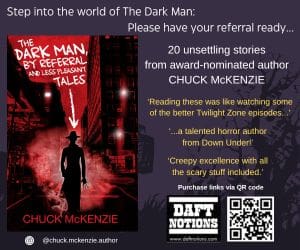 Dion Winton-Polak is a reviewer, podcaster, self-confessed idiot, and the editor of the KnightWatch Press anthology, Sunny, with a Chance of Zombies. I caught up with him to talk zombies, red pens, and how a writer can get that much-desired ‘yes’.
Dion Winton-Polak is a reviewer, podcaster, self-confessed idiot, and the editor of the KnightWatch Press anthology, Sunny, with a Chance of Zombies. I caught up with him to talk zombies, red pens, and how a writer can get that much-desired ‘yes’.
Tell us a bit about your background and how you found yourself editing the KnightWatch Press Anthology, Sunny, with a Chance of Zombies.
Okay, well I’ve been a reader all my life. Books are as much a part of me as fingers and kidneys. I wallowed in English Literature through to University level, developing my critical faculties but never really knowing what I was going to do with them. I suppose I assumed I would be a writer, but writing was never a habit or a hobby with me. It was always reading.
Fast forward through a move to Wales, a wedding, a sequence of terrible or simply tedious jobs, then pause on a copy of SFX magazine. A little article pointed me towards the Geek Syndicate website and the world of podcasting. I lost myself in both for a while and then started to wonder why there wasn’t more content focused on books. I got in touch with the guys from Geek Syndicate and offered to write a few book reviews for them. Next thing you know, I’d started my own podcast called Scrolls, which they were good enough to host on their site.
Writing reviews gave me something to do with my brain and podcasting showed me how easy it could be to put myself out there and create something. Doing both also showed me how unbelievably crucial the editing process is in honing your content and getting your ‘message’ across. Many people find editing a picky and frustrating process, but I LOVED it.
The podcast spurred my good buddy and co-host, Phil, into starting his own writing career, and he in turn kept prodding me to fulfil my own potential. I joined the Society for Editors and Proofreaders and whipped through a few of their courses, but I found the expense outweighed the benefits. In the meantime, Phil introduced me to a number of contacts that he’d made in the field of Small Press publishing. You get nowhere hiding in shadows so I got chatting. I got my first paid editing gig by pretty much sticking my hand up and saying ‘I could do that.’ And I’m relieved to say I proved myself right. Since taking on the job I’ve had nothing but good feedback from authors and publisher alike.
Why Sunny, with a Chance of Zombies? It leapt off them page at me. Who could resist that title?
What were you looking for in the stories you accepted?
Interesting question. The answer I would love to give is “The best stories. Full stop.” I requested that I be given no information about the name, age, race or gender of the authors to ensure I was not swayed by other considerations. Of course, there are many other things to consider, not least of which being ‘What does the publisher want from this anthology?’ All I had to go on at first was the title: Sunny, with a Chance of Zombies. My first job was to come up with submission guidelines to give the authors a nudge in the right direction. Theresa [Derwin, KnightWatch Press] told me she wanted something light and enjoyable to make for good Summer-time reading and, during the course of the conversation I latched onto the words ‘strangely uplifting.’
So I guess that was point #1: The stories had to do what I asked – in other words, either put a big grin on my face or kindle a bit of warmth in my heart. If a story did neither, it had no place in this project.
I had something like 45 submissions to whittle down to 12, so I was looking for something to make them stand out from the crowd. In some instances it was elements of world-building – a new slant on zombies or a new way in which they could fit into our world. In other instances it was a particularly strong character – how much I was made to care about these people. I was going to be looking at these stories for a looong time, so I needed to be kept interested too. With that in mind I specifically looked for fresh perspectives and new predicaments for our protagonists to face.
Point #2 then, would be: there had to be something fundamentally memorable about the story. Something that would keep it alive in my mind after I’d put it down and moved on to other things.
Finally, there was the deadline to consider. Now, an editor can do a hell of a lot to help a writer bring their story to life. An editor can help focus a writer on what is important to the plot, an editor can help a writer sharpen their characters, hone their language, remove inconsistencies. However, the more work an editor has to put in to bring the story up to standard, the longer it takes. Time was ticking and I had a whole other life to balance.
Point #3 then: Good writing. There had to be something in the style, something in the dialogue, something in the plot and the flow that was already pretty damned good.
If you’re a writer, particularly a new writer, you might be gnawing your hand off about now. I mean, you can’t force somebody to like what you’ve written. What you can do though, is keep working and reworking your story until you can no longer see how to improve it. You will lose perspective after a while because everybody does, but make it as good as you can. Then submit it and move on to another project. If it is rejected, you may be able to sell it somewhere else, but seek feedback first. Every rejection is a chance to learn, if you grasp it. Not every editor will be forthcoming every time, but take heart. If they see genuine potential in you it will be in their best interest to encourage you for future projects.
What lessons or surprises have you had through the process?
It’s been a fascinating experience, and I’m still processing it as I write these answers. In many ways I had no notion of just how much there was to do in the editorial role. It is a far broader set of responsibilities than I’d imagined, and far more creative. Some people see it as being judgemental; a tutting red pen on a writer’s beloved work. Indeed, there were times where I had to stop myself from using the Red Pen of Doom because my proposed changes would not have materially improved the story, just made it a bit more palatable to me. That’s not my job, it turns out.
It’s strange. Having set the theme and direction of the work, I started to feel more like the conductor of an orchestra. The final 12 stories were no longer individual pieces, but instruments to be played in concert. The order they appear in has a massive effect on the way the book is received as a whole, just as the order of songs will change your experience of an album. They draw strength from each other, build arcs of meaning, can be counterpointed to reveal different nuances, and will ultimately carry the audience through a much larger journey.
Whether you are editing a novel, an anthology, a story or a newspaper advert, it is all about communication. You are there to help the creator get across their ideas, but you can only do that by earning their trust. That means demonstrating that you understand what they are trying to achieve. That means sharing their enthusiasm and celebrating their successes. That also means (tactfully! and constructively!) showing them where they are straying and helping them find their way back. Finally, it means respecting their decisions.
 Would you recommend the editor role to others?
Would you recommend the editor role to others?
I would completely recommend editing to anyone who loves language and anyone who loves a good story. You need a certain temperament. You need to have a feel for what makes a story work. You need to be able to focus your eyes on the minutiae, but still keep your mind on the bigger picture. If you can build a good relationship with a writer, you will become their Everyman audience, their confidant, their safety net. You may be invisible to the readers but you will become an invaluable partner to writer and publisher alike. Something to be proud of.
Many people say that the zombie genre has been done, and there is nothing new to explore with it. What are your thoughts?
To put it tactfully, I think that many people are wrong. If a story lacks imagination then that’s the fault of the writer, not the subject matter. The great thing about zombies is that they are so obviously us. They are our savagery and our pitifulness, our fear of death and even our hope that something might come afterwards. Death is a constant companion; life a constant mystery. How could their combination be a bore? Pick a good story from any genre, strip away the fancy dress and you’ll still have a good story about People. Zombies may be used a backdrop, they may be a thematic tool, they may even be cast as main characters, but they will never be ‘done.’
Pick any setting, any country, any planet and you can have the dead returning to life. But what could it mean? There are infinite possibilities. What would be tedious is telling the same kind of stories from the same kind of perspectives in the same kind of setting over and over and over again. That has been done before; indeed, it’s a function of big businesses to spew out more-of-the-same as long as there is a visible market for it. From their point of view creativity is expensive, time consuming, and never a guarantee of success. (See: Hollywood.)
The joy of Small Press publishing (and in fact, independent projects across all media) is the freedom to be truly creative. Money would be nice but is never the point of the exercise. If inspiration hits, they can try something new. One of the reasons I was hired for this project was because I am not a traditional horror fan. I enjoy it as a genre, but I am not tied up by its conventions and tropes. I had my own freedom to exercise, pulling together a collection of tales to be truly different from the conventional zombie horror. The author response was fantastic, and it is my greatest pleasure to present it to you all. I only hope I get the opportunity to jump back into this sandpit again in the future and push things even further out.
What other projects are on the horizon?
I have a few little bits of work that are still percolating in the background, but nothing with a deadline yet. A couple of the stories submitted for Sunny were too good to reject outright. I shall be working with the authors and KnightWatch Press to find alternative homes for them, either in another anthology or to be expanded and published separately.
Other than that? Well, I work a full-time day job, I continue writing for Geek Syndicate, and I have a family to fill up my time – but I have loved every minute of this editing job.
My aim is to make this my career, which means taking on more work on a freelance basis until I can secure a salaried position with a publisher.
The horizon is wide and the sky is blue. What have you got for me?
You can find Dion on Twitter, and you can pick up a paperback or ebook copy of Sunny, with a Chance of Zombies from Amazon.

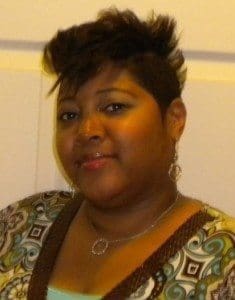 Originally from Chicago, author Maquel A. Jacob now resides in “green and lush” Portland, Oregon. As a woman with a quest to learn new things, she boasts qualifications in accounting and business administration, digital film and video, as well as having been a licensed nail technician. But now, as a member of the Northwest Independent Writer’s Association, you’re more likely to find her “hunkered over her widescreen laptop like Quasimodo”. That, or buried in the mosh pit at a rock concert.
Originally from Chicago, author Maquel A. Jacob now resides in “green and lush” Portland, Oregon. As a woman with a quest to learn new things, she boasts qualifications in accounting and business administration, digital film and video, as well as having been a licensed nail technician. But now, as a member of the Northwest Independent Writer’s Association, you’re more likely to find her “hunkered over her widescreen laptop like Quasimodo”. That, or buried in the mosh pit at a rock concert.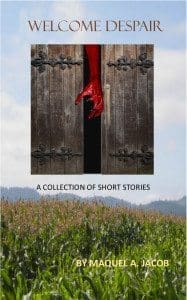


 Dion Winton-Polak is a reviewer, podcaster, self-confessed idiot, and the editor of the KnightWatch Press anthology, Sunny, with a Chance of Zombies. I caught up with him to talk zombies, red pens, and how a writer can get that much-desired ‘yes’.
Dion Winton-Polak is a reviewer, podcaster, self-confessed idiot, and the editor of the KnightWatch Press anthology, Sunny, with a Chance of Zombies. I caught up with him to talk zombies, red pens, and how a writer can get that much-desired ‘yes’.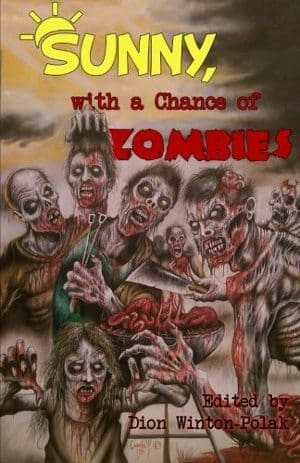 Would you recommend the editor role to others?
Would you recommend the editor role to others?


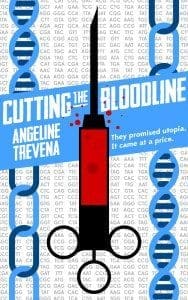 Cutting the Bloodline
Cutting the Bloodline